This entry is about a 7-Night Costa Rica and Panama Canal cruise on the Le Champlain that Scott and I took starting January 30, through February 7, 2022.
See https://photos.app.goo.gl/AUmy8iJErh78fKo99 for just the photos.
The following map shows our itinerary for this trip.
 |
| Above: Itinerary |
The next attachment is a picture of our ship, the Le Champlain, taken from their website.
 |
| Above: Our ship, the Le Champlain. |
Day 1: Sunday, January 30, 2020:
We flew into San José, Costa Rica (from Los Angeles), and checked into the Costa Rica Marriott Hotel Hacienda Belén. It was a very long total flight for me, A few days before we left Los Angles I flew from New York City to Los Angeles to meet up with Scott because I was worried about the weather on the east coast. Turns out I was right as that Nor'easter came in.
Originally we were scheduled to fly from Los Angeles to Dallas and then to San José, Costa Rica. But the airline rescheduled our flight from Los Angeles to go through Miami (not Dallas) and then to San José, Costa Rica. So I took 2 cross country flights when I could have just gone to Miami. But I would have had to shovel New York City snow before a flight to Miami.
Day 2: Monday, January 31, 2022:
We toured San José and later embarked our ship, Le Champlain, at Puerto Caldera, but we haven’t left the dock yet. During our San José tour we went to the National Theatre of Costa Rica and the Pre-Columbian Gold Museum. After that we had lunch at the Arc Restaurant.
The following attachment is a photo of The Allegory of the Coffee and Bananas, a funny mural painting on the ceiling of the National Theatre of Costa Rica. The painter was European, had never been to Costa Rica, had only been told about the country, told that coffee and bananas were the crops and that beautiful women picked the coffee. The painting has white women in gowns and hats with the coffee that never grows at sea level.
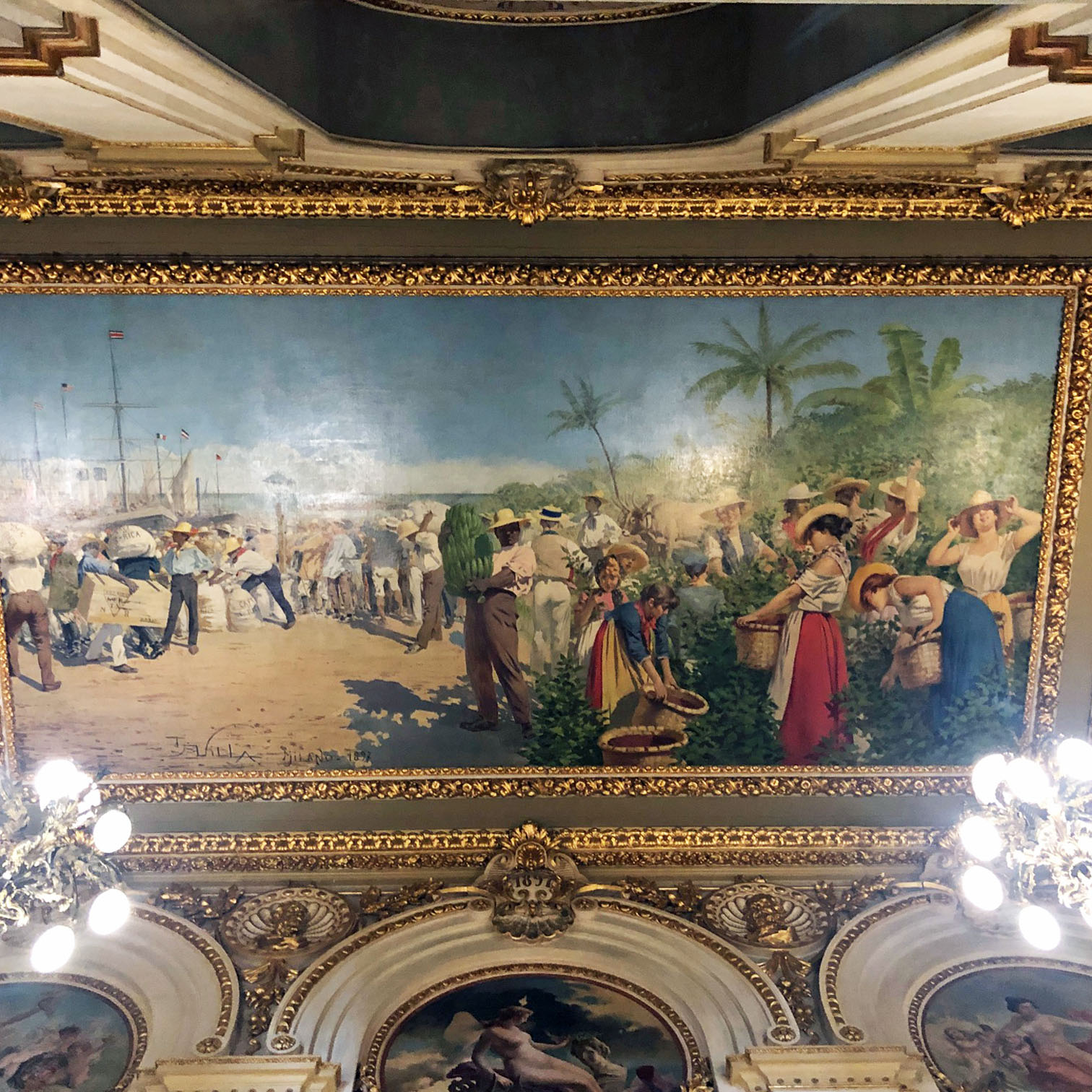 |
| Above: Painting, The Allegory of the Coffee and Bananas. |
The next attachment shows the mountain ring of volcanoes that surround San José.
 |
| Above: Volcanoes around San Jose. |
The next attachment shows the infinity pool on our ship. Looks like it would be easy to fall overboard, fun, eh?
 |
| Above: Swimming pool on the Le Champlain. |
The following attachment shows a view from our cabin on the ship, we were still docked at Puerto Caldera when this photo was taken.
 |
| Above: View from our cabin. |
Day 3: Tuesday, February 1, 2022: Curú National Wildlife Refuge / Tortuga Island
In the morning Scott and I took a walk in the Curú National
Wildlife Refuge on the Nicoya Peninsula in Costa Rica, attached are 4
photos of the flora. We saw monkeys, deer and birds, but were too far
away for good photos. This place is fabulous!
At night we went to the Captain’s party, a dress up event. Fun! I enjoyed eating food from all the main food groups, candy, cake, ice cream, and pie!
Day 4: Wednesday, February 2, 2022:
 |
| Above: Just a dog on the beach. |
The next photo shows a cayman, which is in the alligator family. Alligators live only in freshwater and are found only in the Americas and China. A relative of alligators are crocodiles that can live in both salt and freshwater and are found in Africa, Asia, the Americas and Australia. You’ll need to look closely at this photo as the cayman is mostly submerged in the water.
 |
| Above: Cayman. |
The following photo shows the Cacao fruit (center of the photo), yep the seeds inside are what gives us chocolate, ...one of the major food groups.
The Costa Rica red leaves in the attached photos are the opposite of red leaves in New York. In New York we see red leaves when the energy is being pulled away to prepare the plant for winter. Here in Costa Rica the red leaves are new growth
It seems there are so many animal species that like eating young tender sprouts, so some plants don’t put chlorophyll in the new leaves (which would turn them green) until they are better developed, this helps protect the new leaves as most leaf eaters think red is poison, so they leave them alone. Who knew leafy plants were so smart?
Today was the day we visited the Rio Seco Rainforest in Costa Rica. The literature says it is a 400-acre private property, which is part of the Piedras Blancas National Park. Piedras Blancas National Park is home to toucans, macaws, tapirs, pumas, jaguars and 4 species of monkeys. Yikes, pumas and jaguars!
I’m also including an earlier photo I took of an old boat that almost has my name on it, quite a luxury looking boat.
 |
| Above: Old wooden boat. |
I understand it is Friday, when you are in paradise you lose track of things like days of the week. We went snorkeling today in the emerald waters of seldom-visited Cébaco Island. The beaches were gorgeous, the water just cool enough. We are cruising until we get to Panama City. Good food, good lectures (3 this afternoon), and good wine too. There are 4 photos below, the last photo s of yours truly drinking coconut milk and Myers's Rum (made from Jamaican sugarcane juice), a yummy drink. The ship’s staff had a surprise party after one lecture.
Day 7: Saturday, February 5, 2022: Panama City, Panama
Saturday we were scheduled to visit the UNESCO World Heritage designated Historic District of Casco Antiguo, a charming neighborhood with cobblestone streets and architecturally significant historical buildings, including a 16th century cathedral. Tour the Miraflores Visitor Center, and the brightly colored, multifaceted Biomuseo designed by Frank Gehry. Biomuseo is a museum focused on the natural history of Panama.
Attached are a few photos that show the Bridge of the Americas in Panama City, the colorful Biomuseo, and some interior shots.
 |
| Above: Bridge of the Americas |
 |
| Above: Multifaceted Biomuseo. |
 |
| Above: Yours truly inside the Biomuseo. |
 |
| Above: Inside the Biomuseo. |
Attached are a few more photos, this first one shows the skyline of Panama City, who knew it would look like this? The spiral building is the F&F Tower, also known as “Tornillo" (the screw in Spanish). I don’t know where the F&F name comes from but it’s mostly used for office spaces I believe. The angle of its rotation reaches 360 degrees.
 |
| Above: Panama City skyline. |
The next 4 photos were taken from the Miraflores Visitor Center, looking above the Miraflores locks, one of the three sets of locks that form part of the original Panama Canal. There are a total of 12 locks, we have to go through 6 locks to get to the Atlantic side. 6 locks to go from the Pacific side to the Atlantic side, and another seperate 6 locks to go from the Atlantic side to the Pacific side (but Scott ad I won't be doing this). In the Miraflores locks there are two locks, two of the six we go through. Shortly after that we will go through the 3rd set of locks, the Pedro Miguel Locks.
The above mentioned 12 locks are for the original Panama Canal built in 1914, this does not take into account the new Expanded Panama Canal that began commercial operation in 2016 for the new breed of larger ships.
 |
| Above: View from the Miraflores Visitor Center. |
 |
| Above: Yours truly at the Miraflores Visitor Center. |
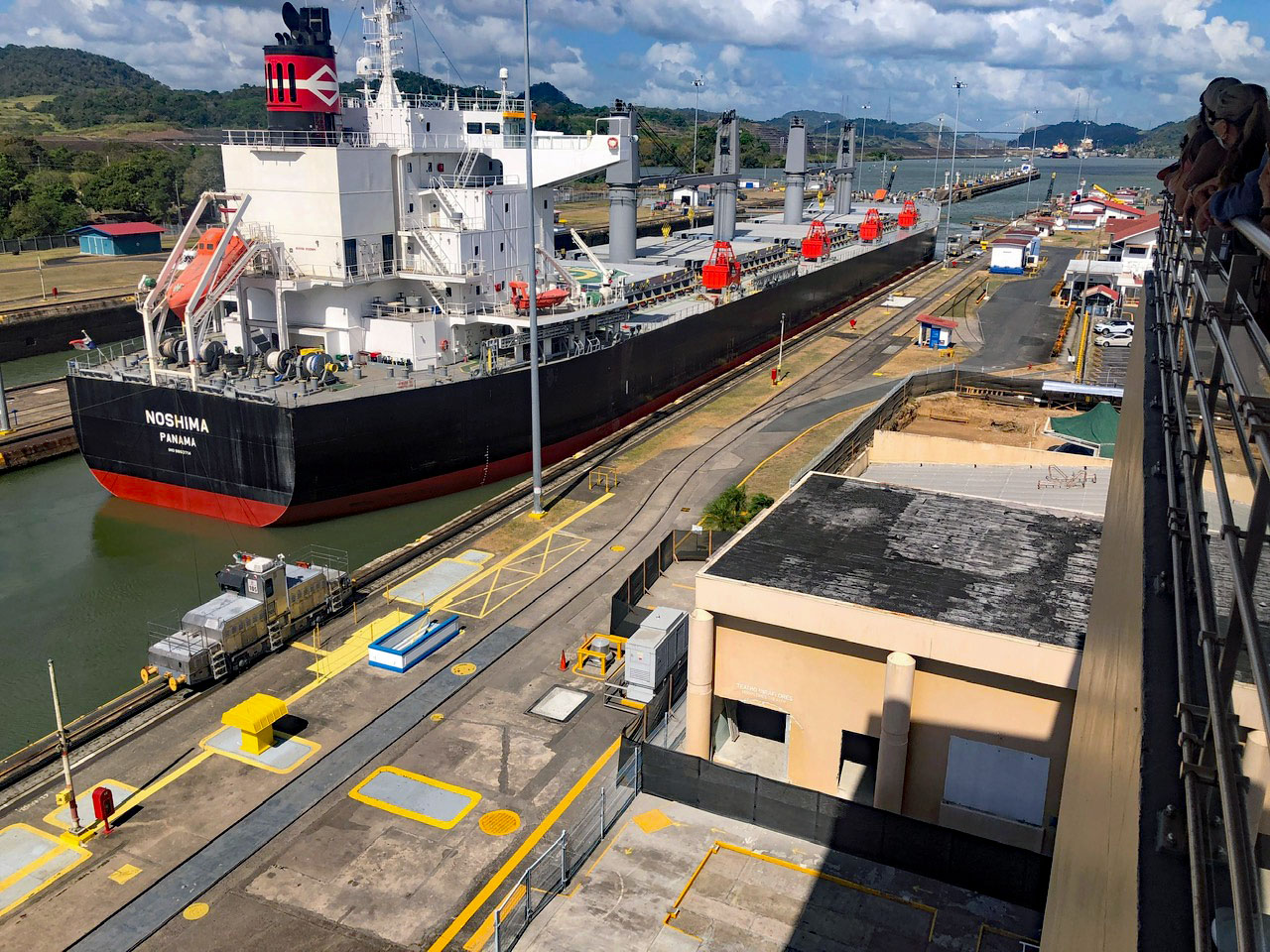 |
| Above: View from the Miraflores Visitor Center. |
 |
| Above: View from the Miraflores Visitor Center. |
The following is a 31 second video of the gates at Miraflores closing.
Day 8: Sunday, February 6, 2022: Crossing the Panama Canal
Today we cruised from the Pacific Ocean to the Caribbean Sea through the locks of the fascinating Panama Canal and enjoyed a lecture on its history. Below are some photos
The photo below is the Bridge of Americas Panama (Spanish: Puente de las Américas) was built along the Pan-American Highway in 1962. In a lecture we learned the Pan-American Highway starts in Prudhoe Bay, Alaska, and stretches to the tip of Argentina in Ushuaia. Part of the Pan American Highway ends in Panama at the Columbian border because of the 60-mile wide Darien Gap and starts again further South in Columbia. This bridge carries 4 lanes of traffic. We cruised under this bridge to get to the entrance of Panama Canal.
 |
| Above: Bridge of Americas. |
The following photo is guess who? Just so you know Scott and I were there. This is actually sort of a selfie, I took this off a reflection on the ship.
 |
| Above: Yours truly and Scott. |
The next photo is heading into the 2nd Miraflores lock.
 |
| Above: Heading into the Miraflores lock. |
Next is a photo as we were leaving the 2nd Miraflores Locks.
 |
| Above: Leaving the Miraflores lock. |
The following photo is the Centennial Bridge (Spanish: Puente Centenario): We learned this bridge was built in 2004 to supplement the overcrowded Bridge of the Americas and to replace it as the carrier of the Pan-American Highway. This photo was taken after we exited the 3rd set of locks on the Pacific side, the Pedro Miguel Locks. For you bridge design lovers out there, this is of course a cable-stayed bridge, and carries 6 lanes of traffic over the Panama Canal. The new Kosciuszko bridge in New York City is the first cable-stayed bridge in my New York hometown, that I’m aware of anyway. The Sunshine Skyway Bridge in Tampa, Florida is a cable-stayed bridge close to my Florida hometown in Clearwater. And the new Gerald Desmond Bridge in Long Beach, not too far from where Scott lives, is a cable-stayed bridge.
 |
| Above: Centennial Bridge. |
The Culebra Cut is shown in the next photo, we learned this was the most difficult part of the digging of the canal due to the unstable nature of the soil and rock in the area. This photo was taken shortly after we cruised under the Centennial Bridge
 |
| Above: Culebra Cut. |
A few more photos to share from Saturday, these on the Atlantic side.
The photo below was taken before the Gatun Locks in the area known as the Chagres River (Spanish: Río Chagres), a stream in Panama forming part of the Panama Canal system
The following photo was taken in the area known as Gatun Lake, before the Gatun Locks.
The photo below taken coming out of the Gatun Locks, looking towards the Atlantic Bridge (Spanish: Puente Atlántico), a bridge in Colón, Panama. This bridge is the 3rd Panama Canal Crossing and is the longest concrete cable-stayed bridge on the planet.
 |
| Above: looking towards the Atlantic Bridge. |
The next photo is the Order of the Ditch for yours truly. 😀
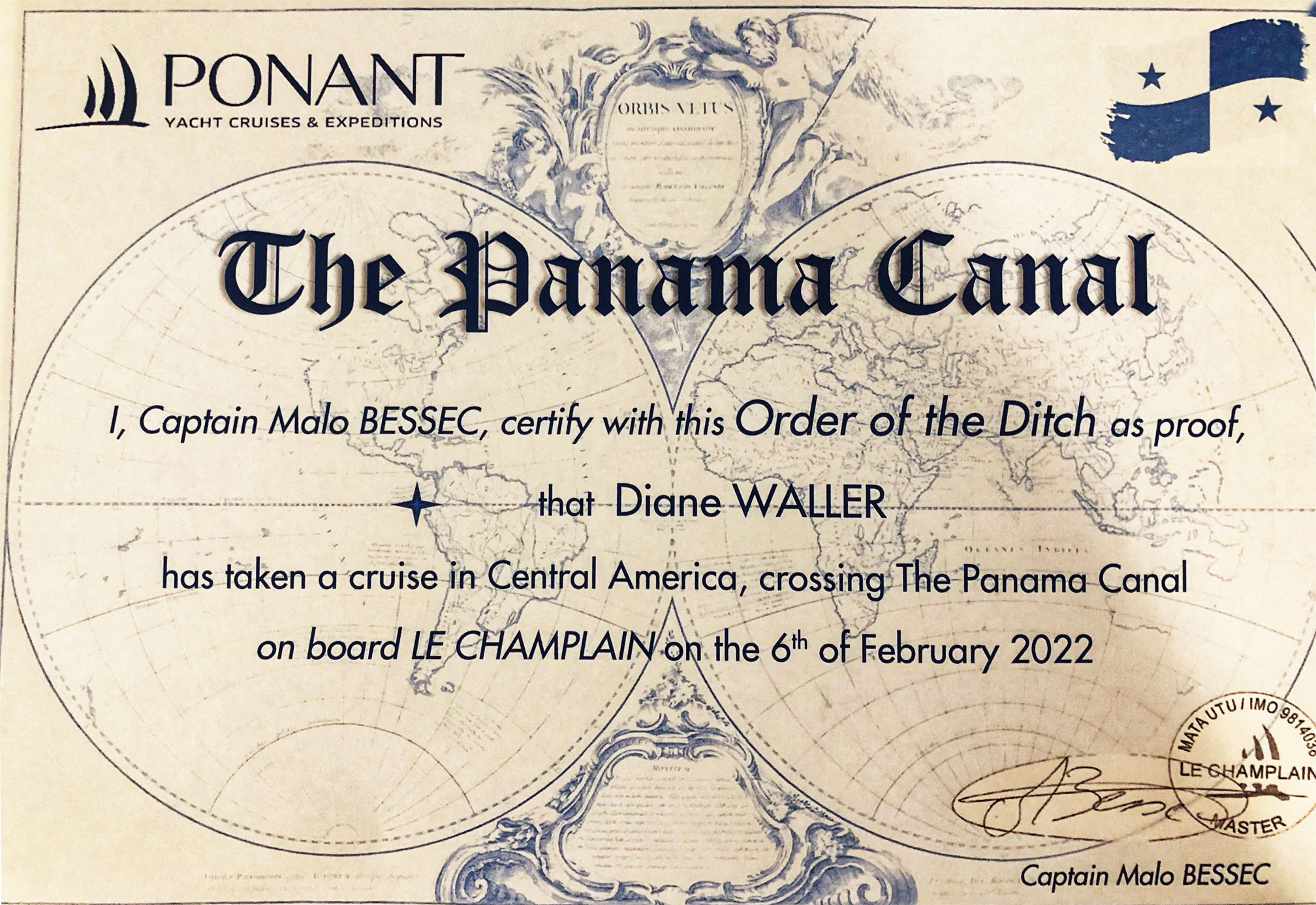 |
| Above: My Order of the Ditch. |
I didn't get any photos going through the Gatun Locks, I became friends with a woman teaching a class on smartphone photography during this time and opted to take her class. Learned a lot about photography apps for the smartphone.
Day 9: Monday, February 7, 2022: In Colón, Disembark the ship, tour of the Emberá tribe, and leaving for Panama City
We stayed on the ship Sunday night after going through the Panama Canal. Monday we disembarked our ship to head for Panama City. But we had time to do a few things before leaving Colón.
In the morning we visited the Panama Canal Expansion Agua Clara Visitor Center to enjoy panoramic views of the canal’s new longer, wider locks and impressive 166-square-mile Gatún Lake.
The photo below shows a ship in the new expansion locks The new locks are 1400 ft long vs 1000 feet for the original locks and 180 feet wide vs 100 feet wide.
 |
| Above: New expansion locks on Atlantic side. |
The next photo shows a ship leaving the expansion locks heading into Gatun lake.
 |
| Above: Ship leaving new expansion locks. |
On the bus ride from Colón to Panama City, we stopped to take a tour of the Emberá tribe that still live in traditional villages deep in the rainforest of Panama. This is the tribe that teaches soldiers and astronauts how to survive in the jungles all over the world. From the Darien Gap (jungle of Panama). Below are some photos
 | |
| Above: The river trip we took, the Rio Gatun is about 18 inches deep. |
 |
| Above: The approach to the indigenous Emberá Village. |
 |
| Above: Yours truly at the Emberá Village. |
 |
| Above: Another view to the village. |
 |
| Above: A welcome to the village by a member of the ever present youth. |
 |
| Above: The welcoming women that will dance for us later. |
 |
| Above: the welcoming drummers in customary costumes. Daily attire is the yellow cloth basically on a belt covering all the necessary parts. |
They fed us a lovely lunch on banana leaves. Fried fish and plantains and fruit for dessert. The bus ride back from the boat (and Colón) to Panama City was quiet, this was a long day.
The attached 14 second video shows some of the the traditional Emberá dance and music.
Day 10: Tuesday, February 8, 2022: Panama City
The last couple of days (Tuesday and Wednesday) in Panama City were interesting but not as interesting as the Panama Canal crossing and the Emberá Village tour.
We learned a little about the history of Panama City and Henry Morgan, the pirate who invaded Panama in 1671. He ended up an entrepreneur making rum and an official charged with getting rid of pirates.
From today, below are four photos of the ruins at Ciudad Vieja (aka Panama Viejo), a historic archaeological site, that we visited.
Above: Ruins at Ciudad Vieja. Above: Ruins at Ciudad Vieja. Above: Yours truly at the ruins at Ciudad Vieja.
Below are 2 photos of the mud flats in this area. This location for Ciudad Vieja was chosen because of the mud flats. The pirate ships couldn’t land their galleons. The tides are -3 ft to +16 ft. 2 high tides, 2 low tides everyday. Everything that came by sea had to be towed in at high tide. The mud flats are brown and smelly with expensive condos overlooking them.
 |
| Above: Mud flats. |
 |
| Above: Mud flats. |
Below is a photo of some leafcutter ants' dump. They take those leaves inside and wait until a fungus grows and eat the fungus so they have to get rid of the now rotten leaves. Fascinating insects. Not endangered. Actually considered a pest by homeowners and gardeners as they can strip a tree of all its leaves in a day.
 |
| Above: Leafcutter ants' dump |
Day 11: Wednesday, February 9, 2022: Panama City
Wednesday
we toured the Museum of Contemporary Art in Panama City, the next to
the last photo below is of yours truly at the main exhibit, about
transgender people. I am in a drag Queen costume.
 |
| Above: Museum of Contemporary Art. |
The next and last photo is Scott and I, taken in the Multiplaza Panama, largest mall in Panama.
Above: Photo from the Massimo Dutti at Multiplaza Panama.




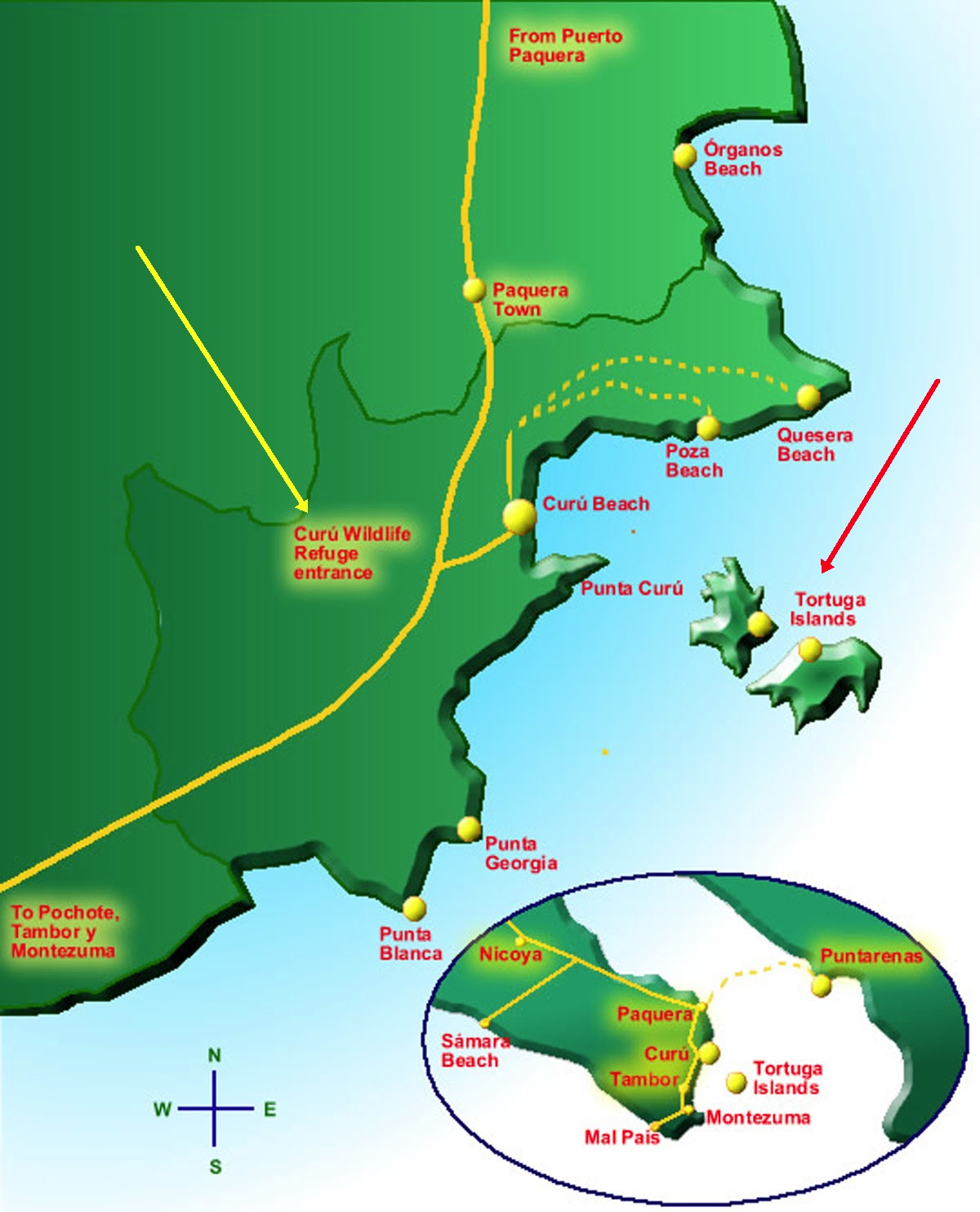



















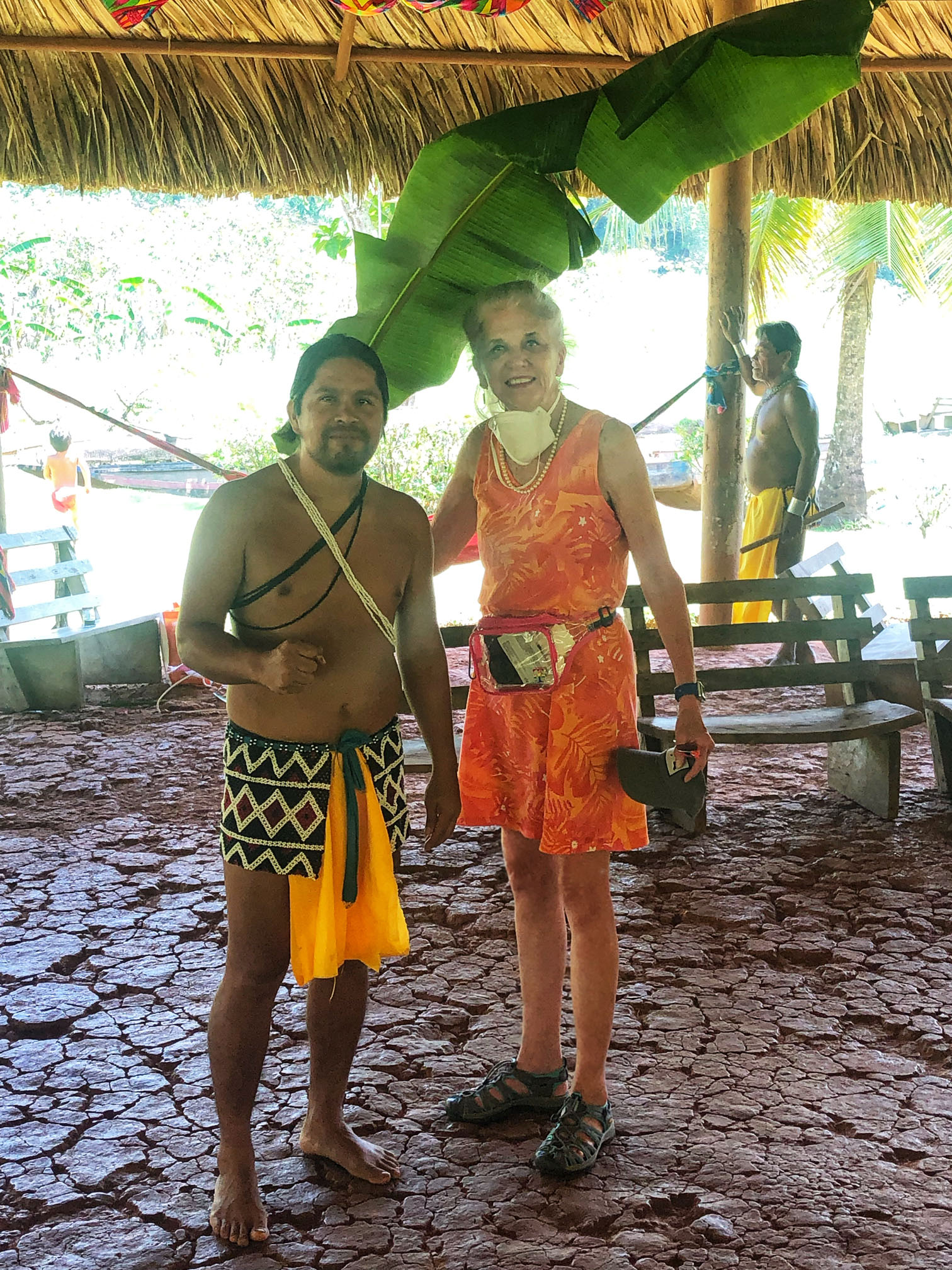





No comments:
Post a Comment